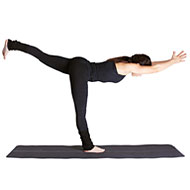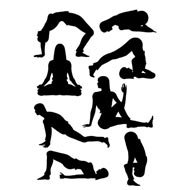- Raja yoga
- Yoga Stretches
- Jivamukti Yoga Poses
- Yoga Tree Pose
- Sun and Moon Yoga
- Wind Removing Pose
- Hare Pose
- Accomplished Pose
- Urdhva Mukha Pinch Mayurasana
- Revolved Abdomen Pose
- Raised Foot Pose
- Scorpion Pose
- Butterfly Pose
- Half Tortoise Pose
- Revolved Twist
- Cat Pose
- Supported Shoulderstand
- Crane Pose
- Handstand
- Happy Baby Pose
- Firefly Pose
- Scale Pose
- Side Plank Pose
- Upward Facing Two-Foot Staff Pose
- Reclining Big Toe Pose
- Stick Pose
- Revolved Head-to-Knee Pose
- Full Boat Pose
- Upward Extended Feet Pose
- Yoga arm balance poses
- Core Yoga
- Inversion Yoga Poses
- Seated And Twist Yoga
- Horse Pose
- Cobbler Pose
- Seated Wide Angle Pose
- The Compass Pose
- Half Crow Pose
- Bound Half Moon Pose
- Lotus Pose
- Reverse Warrior Pose
- Fixed Firm Pose
- Back-bend Poses
- Forward bend Poses
- Sarvangasana
- Ashtanga Yoga Poses
- Warm up poses
- Seated Poses
- Seated Forward Bends
- Chair Poses
- Standing Poses
- Standing Balancing poses
- Yoga Asanas
- Hatha Yoga Asanas
- Yoga Postures Online
- Partner Yoga Poses
- Anusara Yoga Poses
- Advanced Yoga poses
- Restorative Yoga Poses
- Kids Yoga Poses
- Beginning Yoga Postures
Balancing Stick Pose (Tuladandasana)
The Tuladandasana or Balancing Stick Pose is an advanced yoga posture. This balancing posture is great for strengthening the legs, back, and midsection and although it is a static posture, it is also a great cardio workout because it increases the heart rate.
The Tuladandasana is also sometimes known as the Warrior III Pose or the Ek Pada Asana (One Legged Pose). This posture is also a part of the popular Bikram Yoga or Hot Yoga series of workouts.
Steps :
- Stand up straight in the Tadasana or the Mountain Pose.
- Inhale and raise your arms to the sky. Clasp your hands with your index fingers pointing up to the sky. Your biceps should be close to your ears and your chin should be up and back straight.
- Step forward with your right foot.
- Now slowly transfer all your weight onto your right foot as you begin to lift your left foot off the floor. Focus on keeping your spine straight at all times.
- Continue to raise your left leg straight into the air behind you as you bend forward to form a Tee with your outstretched arms and left straight leg.
- Hold this posture for a few seconds.
- Slowly come back to the Tadasana.
- Repeat this process on the other side by stepping your left leg forward.
Precautions :
There are certain balancing stick pose precautions that must be exercised when performing this exercise. If you are just starting out in your journey of yogic discovery, perhaps this is not a pose that you should attempt right away. It is always a good idea to speak to your yoga guru or instructor and follow his/her directions. Ask your guru to guide you through the steps necessary to perform the pose so that you do not end up doing something wrong and risk injury.
Beginner’s Tip :
Here’s a beginner’s tip for the balancing stick pose: first get your balance right and only then attempt the pose. Mastering the Vrikshasana or Tree Pose is a great way to get your body used to balancing on one foot. When you are performing the Tuladandasana, anchor your eyes to an imaginary spot that is approximately four feet away from your weight bearing foot. This will help you to maintain your balance. Also focus on stabilizing your core muscles to provide a firm foundation for the rest of the body.
Benefit to Body Part :
- The Tuladandasana is an excellent posture for improving your sense of balance.
- It also helps to strengthen your leg as the weight of the entire body is borne on one leg.
- In addition to strengthening your leg muscles, the Balancing Stick Pose also helps to strengthen the core muscles of the abdomen and the back.
- This posture also helps to provide a gentle stretch to the entire spinal column.
- As this pose elevates your heart rate, it also helps you burn a lot of calories.
- It also helps you to increase your stamina and endurance.
Therapeutic Applications :
- The Tuladandasana is an excellent posture for strengthening the heart. This is because the posture forces the heart to pump faster and thus, improve blood circulation throughout the body while strengthening the muscles of the heart. Consequently, this posture can also help to clear blocked arteries and in general is highly recommended for good cardiac health.
- The Balancing Stick Pose is also highly recommended for those suffering from varicose veins.
- This posture also improves the efficiency of the nervous system and the circulatory system.
- In addition, it also benefits the liver, spleen, and pancreas.
- The Balancing Stick Pose is also excellent for relieving any stress that has accumulated along the spine.
- When performed in conjunction with the proper breathing sequence it also helps improve your lung capacity and can help stave off pulmonary infections.
Variations :
- When you are just starting out, it may not be possible for you to align your body to form a perfect T-shape. Start out by balancing on one leg and keeping your arms straight overhead and try to lift your other leg of the floor as high as you can. It does not matter if you cannot bring your torso to a position where it is parallel to the ground. Just concentrate on keeping your back straight and enjoy the stretch on your spine.
- If you cannot maintain your balance while keeping your arms outstretched, you can either place your arms on your hips or on the floor in front of your foot to aid in your balance.
- As you begin to grow more proficient, continue to raise one leg so that as far as possible your arms and raised legs are parallel to the floor. Hold this posture for some time while gently breathing in and out.
- When you can successfully hold this posture for at least 30 seconds, you can further increase the difficulty of the Balancing Stick Pose by performing it with your eyes closed.
Preparatory Poses :
The Tadasana or Mountain Pose is one of the best preparatory poses for the Balancing Stick Pose. This pose will allow you to center yourself so that your mind and body are fully prepared to perform the Tuladandasana. Another excellent preparatory pose for the Balancing Stick Pose as mentioned earlier, is the Vrikshasana or Tree Pose. This pose allows your body and mind to get used to balancing your weight on foot.



